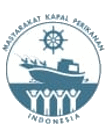Divergensi Nutrisi Antara Dua Spesies Sargassum (Phaeophyceae) Simpatrik: Implikasi untuk Aplikasi Pangan Fungsional Tertarget
Abstract
The industrial application of Sargassum as a functional food ingredient is often limited by a generalized approach that overlooks interspecies biochemical variations. This study addresses current gap through a comparative nutritional analysis of two sympatric species, Sargassum ilicifolium and S. polycystum, collected from the Spermonde Archipelago, Indonesia, to establish a basis for precision bioprospecting. Standardized sample preparation was followed by comprehensive chemical profiling conducted in triplicate (n=3). Proximate and mineral analyses adhered to AOAC protocols, while fatty acid and amino acid profiles were determined using Gas Chromatography-Mass Spectrometry (GC-MS) and Ultra-Performance Liquid Chromatography (UPLC), respectively Comparative data were statistically validated using Independent Samples t-testsResults revealed distinct "functional fingerprints" for each species. S. ilicifolium exhibited significantly higher mineral content, particularly ash and phosphorus, whereas S. polycystum was richer in carbohydrates and crude fiber. A marked divergence was observed in their fatty acid profiles: S. ilicifolium was predominantly characterized by palmitic acid, while S. polycystum was dominated by myristic acid. Although S. ilicifolium had slightly lower total protein, it displayed a superior profile for sports nutrition, with significantly higher concentrations of key branched-chain amino acids (BCAAs), such as leucine. These findings demonstrate that sympatric Sargassum species exhibit unique biochemical profiles, supporting a species-specific approach for targeted functional food applications. Specifically, S. ilicifolium is suited for mineral supplementation and sports nutrition markets, while S. polycystum is better positioned for general food fortification and as a source of specific oleochemicals.
Full Text:
PDFReferences
Afonso NC, Catarino MD, Silva AMS, & Cardoso SM. 2019. Brown Macroalgae as Valuable Food Ingredients. Antioxidants 8, 365.
Biancarosa I, Belghit I, Bruckner CG, Liland NS, Waagbø R, Amlund H, Heesch S, & Lock E. 2018. Chemical characterization of 21 species of marine macroalgae common in Norwegian waters: benefits of and limitations to their potential use in food and feed. J. Sci. Food Agric. 98, 2035–2042.
Blewett TA, Binning SA, Weinrauch AM, Ivy CM, Rossi GS, Borowiec BG, Lau GY, Overduin SL, Aragao I, & Norin T. 2022. Physiological and behavioural strategies of aquatic animals living in fluctuating environments. J. Exp. Biol. 225.
Butlin RK, Galindo J, & Grahame JW. 2008. Sympatric, parapatric or allopatric: the most important way to classify speciation? Philos. Trans. R. Soc. B Biol. Sci. 363, 2997–3007.
Circuncisão AR, Catarino MD, Cardoso SM, & Silva AMS. 2018. Minerals from Macroalgae Origin: Health Benefits and Risks for Consumers. Mar. Drugs 16, 400.
de Luca M, Pappalardo I, Limongi AR, Viviano E, Radice RP, Todisco S, Martelli G, Infantino V, & Vassallo A. 2021. Lipids from Microalgae for Cosmetic Applications. Cosmetics 8, 52.
Duan Y, Li F, Li Y, Tang Y, Kong X, Feng Z, Anthony TG, Watford M, Hou Y, Wu G, & Yin Y. 2016. The role of leucine and its metabolites in protein and energy metabolism. Amino Acids 48, 41–51.
Dufour CMS, Meynard C, Watson J, Rioux C, Benhamou S, Perez J, du Plessis JJ, Avenant N, Pillay N, & Ganem G. 2015. Space Use Variation in Co-Occurring Sister Species: Response to Environmental Variation or Competition? PLoS One 10, e0117750.
Fithriani D, & Melanie S. 2022. Vitamin and mineral content of microalgae Phorpyridium and Chlorella and development prospects for food raw materials in Indonesia. IOP Conf. Ser. Earth Environ. Sci. 1034, 012043.
Gorissen SHM, Crombag JJR, Senden JMG, Waterval WAH, Bierau J, Verdijk LB, & van Loon LJC. 2018. Protein content and amino acid composition of commercially available plant-based protein isolates. Amino Acids 50, 1685–1695.
Gu C, Mao X, Chen D, Yu B, & Yang Q. 2019. Isoleucine Plays an Important Role for Maintaining Immune Function. Curr. Protein Pept. Sci. 20, 644–651.
Helms CC, Gladwin MT, & Kim-Shapiro DB. 2018. Erythrocytes and Vascular Function: Oxygen and Nitric Oxide. Front. Physiol. 9.
Hunter JD. 2007. Matplotlib: A 2D Graphics Environment. Comput. Sci. Eng. 9, 90–95.
Kench PS, & Mann T. 2017. Reef Island Evolution and Dynamics: Insights from the Indian and Pacific Oceans and Perspectives for the Spermonde Archipelago. Front. Mar. Sci. 4.
Latimer GW (Ed.). 2023. Official Methods of Analysis. In: Official Methods of Analysis of AOAC International. Oxford University Press, New York.
Mann G, Mora S, Madu G, & Adegoke OAJ. 2021. Branched-chain Amino Acids: Catabolism in Skeletal Muscle and Implications for Muscle and Whole-body Metabolism. Front. Physiol. 12.
Masri MA, Jurkowski W, Shaigani P, Haack M, Mehlmer N, & Brück T. 2018. A waste-free, microbial oil centered cyclic bio-refinery approach based on flexible macroalgae biomass. Appl. Energy 224, 1–12.
Pereira H, Barreira L, Figueiredo F, Custódio L, Vizetto-Duarte C, Polo C, Rešek E, Engelen A, & Varela J. 2012. Polyunsaturated Fatty Acids of Marine Macroalgae: Potential for Nutritional and Pharmaceutical Applications. Mar. Drugs 10, 1920–1935.
Sohrabipour J. 2019. Fatty Acids Composition of Marine Macroalgae (Review). J. Phycol. Res. 3, 348–374.
The pandas development team. 2020. pandas-dev/pandas: Pandas (v1.0.0) [WWW Document]. Zenodo.
Tulp M, & Bohlin L. 2002. Functional versus chemical diversity: is biodiversity important for drug discovery? Trends Pharmacol. Sci. 23, 225–231.
Verheij E, & Prud`homme van Reine WF. 1993. Seaweeds of the Spermonde Archipelago, SW Sulawesi, Indonesia. Blumea - Biodiversity, Evol. Biogeogr. Plants 37, 385–510.
Virtanen P, Gommers R, Oliphant TE, Haberland M, Reddy T, Cournapeau D, Burovski E, Peterson P, Weckesser W, Bright J, van der Walt SJ, Brett M, Wilson J, Millman KJ, Mayorov N, Nelson ARJ, Jones E, Kern R, Larson E, Carey CJ, Polat İ, Feng Y, Moore EW, VanderPlas J, Laxalde D, Perktold J, Cimrman R, Henriksen I, Quintero EA, Harris CR, Archibald AM, Ribeiro AH, Pedregosa F, van Mulbregt P, Vijaykumar A, Bardelli A Pietro, Rothberg A, Hilboll A, Kloeckner A, Scopatz A, Lee A, Rokem A, Woods CN, Fulton C, Masson C, Häggström C, Fitzgerald C, Nicholson DA, Hagen DR, Pasechnik D V., Olivetti E, Martin E, Wieser E, Silva F, Lenders F, Wilhelm F, Young G, Price GA, Ingold G-L, Allen GE, Lee GR, Audren H, Probst I, Dietrich JP, Silterra J, Webber JT, Slavič J, Nothman J, Buchner J, Kulick J, Schönberger JL, de Miranda Cardoso JV, Reimer J, Harrington J, Rodríguez JLC, Nunez-Iglesias J, Kuczynski J, Tritz K, Thoma M, Newville M, Kümmerer M, Bolingbroke M, Tartre M, Pak M, Smith NJ, Nowaczyk N, Shebanov N, Pavlyk O, Brodtkorb PA, Lee P, McGibbon RT, Feldbauer R, Lewis S, Tygier S, Sievert S, Vigna S, Peterson S, More S, Pudlik T, Oshima T, Pingel TJ, Robitaille TP, Spura T, Jones TR, Cera T, Leslie T, Zito T, Krauss T, Upadhyay U, Halchenko YO, & Vázquez-Baeza Y. 2020. SciPy 1.0: fundamental algorithms for scientific computing in Python. Nat. Methods 17, 261–272.
Ward FM, & Deyab MA. 2021. Comparative Study of Nutritional Importance of Some Marine Macroalgae as a Novel Natural Source of Amino Acids. Russ. J. Mar. Biol. 47, 39–46.
Widyaswari SG, Metusalach, Kasmiati, & Amir N. 2024. Bioactive compounds and DPPH antioxidant activity of underutilized macroalgae (Sargassum spp.) from coastal water of Makassar, Indonesia. Biodiversitas J. Biol. Divers. 25, 162–168.
Widyaswari SG, Metusalach M, Kasmiati K, & Amir N. 2025. Nutritional Composition of Sargassum polycystum C. Agardh 1824 from the Spermonde Archipelago, South Sulawesi, Indonesia. Thalass. An Int. J. Mar. Sci. 41, 51.
Wu G, Meininger CJ, McNeal CJ, Bazer FW, & Rhoads JM. 2021. Role of L-Arginine in Nitric Oxide Synthesis and Health in Humans. In: Wu, G. (Ed.), Advances in Experimental Medicine and Biology, Vol 1332. Springer, Cham, pp. 167–187.
Xu M, Hu D, Liu X, Li Z, & Lu L. 2025. Branched-Chain Amino Acids and Inflammation Management in Endurance Sports: Molecular Mechanisms and Practical Implications. Nutrients 17, 1335.
DOI: https://doi.org/10.35308/jpt.v12i2.13786
Refbacks
- There are currently no refbacks.
Copyright (c) 2025 Singgih Afifa Putra, Santia Gardenia Widyaswari

This work is licensed under a Creative Commons Attribution-NonCommercial-ShareAlike 4.0 International License.
Jurnal Perikanan Tropis (print ISSN 2355-5564 ;online ISSN 2355-5572), is published by the Faculty of Fisheries and Marine Science Universitas Teuku Umar, Indonesia .

This work is licensed under a Creative Commons Attribution-NonCommercial-ShareAlike 4.0 International License










